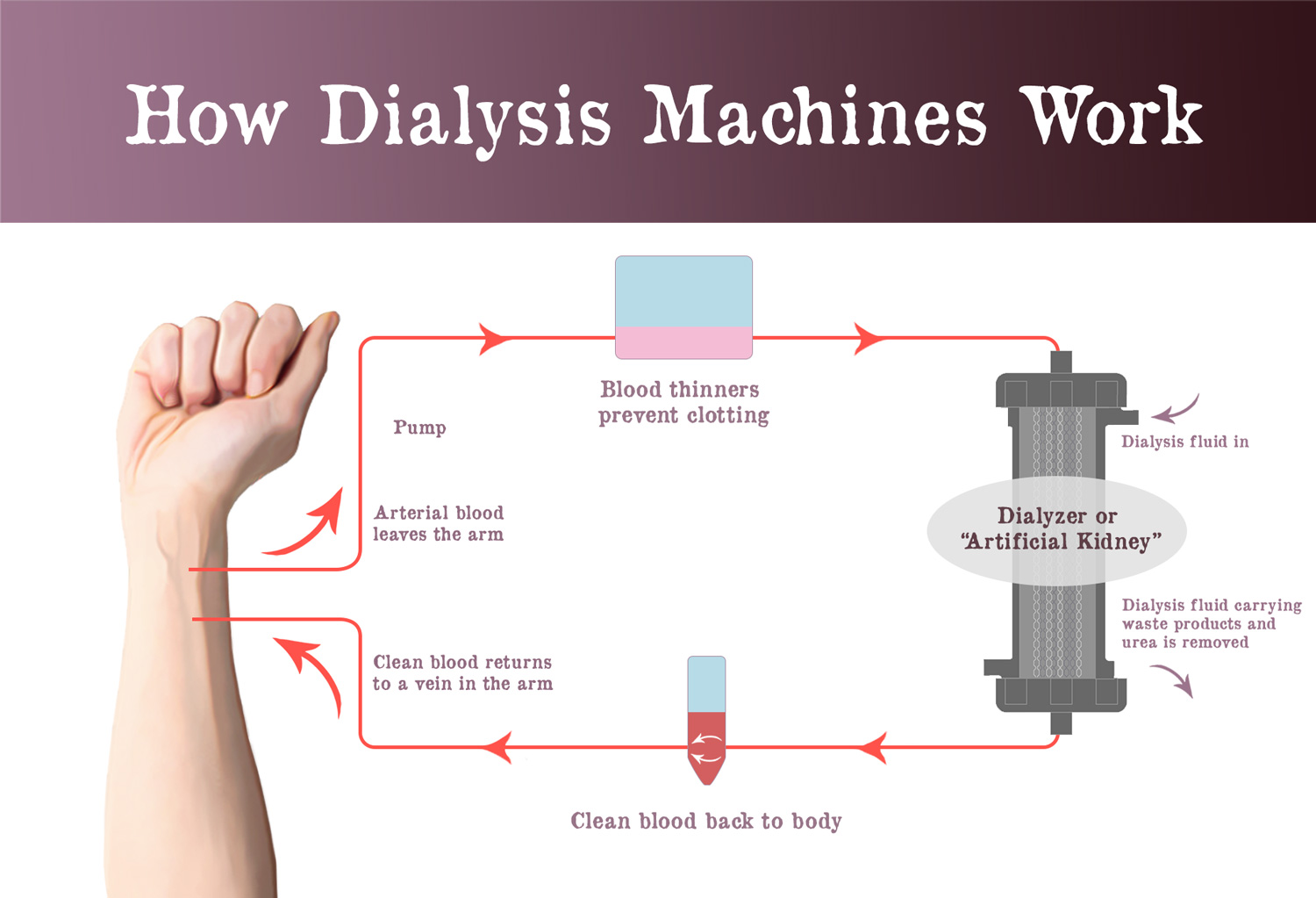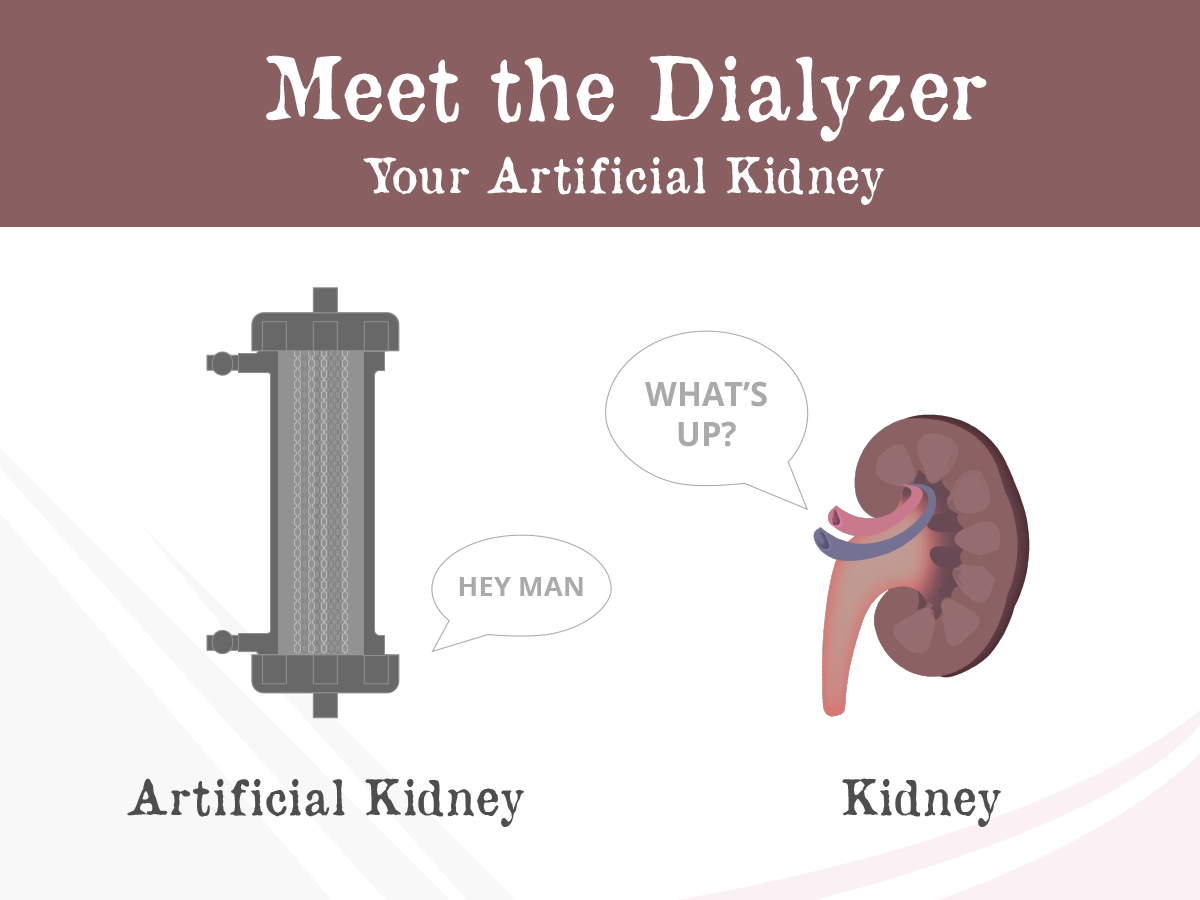How does hemodialysis work?
“Hemo” means blood or blood dialysis. With hemodialysis a machine uses a dialyzer or ‘artificial kidney’ to clean ones blood. This is done when the kidney is no longer able to filter waste from the blood. This machine takes a small amount of blood at a time and cleans it while monitoring important vitals like blood pressure.
There are 4 main components to the dialysis apparatus:
- Dialyzer
- Dialysate or Dialysis solution
- Tubing needed for the transport of blood and dialysis solution
- Dialysis machine
The dialyzer or ‘artificial kidney’ has a shell within which multiple, parallel hollow fibers run though. These fibers are suspended in a solution called ‘dialysate’ and they function as a membrane across which blood and dialysate flow. Blood and the dialysate solution enter from opposite ends of the dialyzer. Through processes called diffusion and convection our blood gets cleaned and the cleaned blood is returned back to the body via tubing.
How Does the Dialyzer Clean My Blood?
The dialyzer uses two main principles to filter the blood.
DIFFUSION |
CONVECTION |
|
|

Within the dialyzer are hollow and parallel fibrils that are suspended in dialysate (think of it like a washing fluid). These fiber functions as a semi permeable membrane - this means only certain molecules can pass through. Large molecules such as protein (albumin) and RBC's can't pass through but smaller molecules such as urea (waste), sodium, potassium, phosphorus, creatinine and magnesium can pass through.
The end result? The filtered blood that comes out the opposite end of the dialyzer is free of waste, has the correct concentration of electrolytes, and excess H2O is removed.
We can program the dialysis machine to remove a set amount of water within the treatment time (its usually the amount of weight you have gained since the previous treatment). Water retention is a common concern with dialysis patients as it can be life threatening.
How is the blood taken from my body?
In order to get the blood we need to “access” to the bloodstream. This can be done with a fistula, graft or catheter. These are different types of hemodialysis access.

